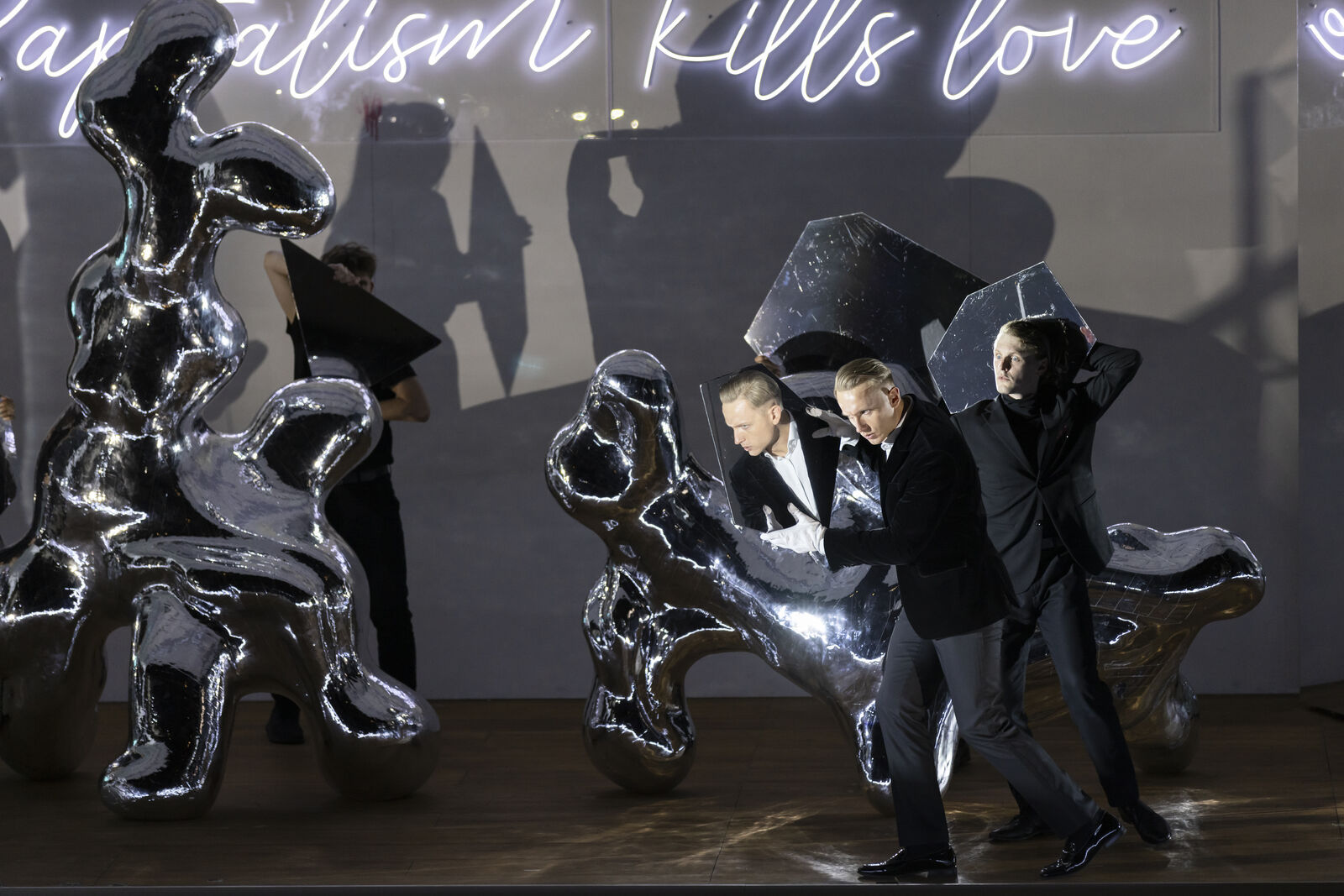The Marriage Of Figaro opera review: Keeps the mind and eyes on constant alert
Komische Oper Berlin produce another jaw-droppingly daring work that upturns audience expectations about a canonical work

You have to wonder if, during the planning stages of The Marriage Of Figaro, Kirill Serebrennikov wrote a little ‘note to self’. Something along the lines of ‘whatever you do, don’t let them get bored’. Because for over three hours, the Russian director throws everything at us in a bid to command our attention . . . and succeeds. Serebrennikov, who also co-designed the set and costumes, has produced an assault on the senses that never knowingly gives you one thing to concentrate on.
Split over two levels in order to convey the ‘upstairs/downstairs’ social partition of the opera, the set is an ever-changing wonderland of contemporary art and domestic drudgery. Up high, paintings, sculptures and light installations come and go, some adorn the walls, others take centre stage. Below, it’s all washing machines, ironing boards, and lockers for the staff’s personal effects. To say the stage is busy is the understatement of the century, but it’s nothing compared to our minds as we attempt to consume this optical banquet.

An example: at one point our eyes need to read the surtitles, watch whoever is currently singing, observe silent comic horseplay being acted out elsewhere on stage, and read fast incoming text messages projected onto a mattress. The dilemma of where to look, when literally everything is pulling focus, soon dies down however and you learn to relax and just go with it. As this is an Komische Oper Berlin production, it goes without saying that the singing and musicianship is first class, and that Mozart’s music and da Ponte’s libretto are in the safest of hands. The performers (including several non-singing characters) also rise ably to every challenge Serebrennikov sets them, including a great deal of skilful physical comedy.
The addition of a new character, ‘Cherubina’ (who gives voice to Cherubino, who is now deaf), puts even more power in the hands of the opera’s female personas. And although it’s hard to feel anything emotionally for these people, their troubles and quandaries hold our interest throughout. But the statements about class and artificiality, literally spoken at one point and also reflected in the visual art, would have Mozart and da Ponte (who battled so hard against the aristocracy to stage their opera) smiling in their graves.
The Marriage Of Figaro, Festival Theatre, 17 August, 7pm, 18 August, 4pm, as part of Edinburgh International Festival.